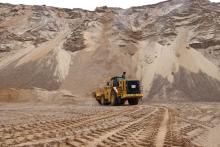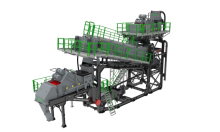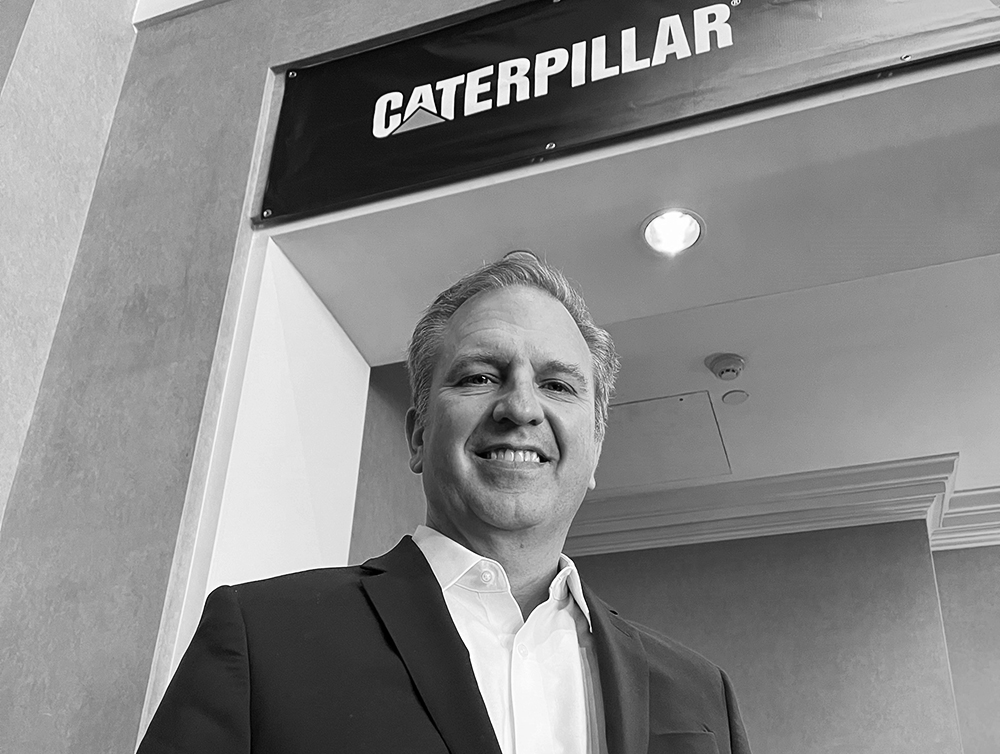
Caterpillar and longtime customer Luck Stone have teamed up to deploy an autonomous hauling solution at Luck Stone's Bull Run plant in Chantilly, Virginia. For what will be its first autonomous deployment in the aggregates industry, Caterpillar is expanding its autonomous haul truck fleet to include the 100-ton (91.7-tonne) class Cat 777. Caterpillar is also testing its new Cat Command non-line-of-sight remote control operation for mid-sized wheeled loaders at quarry sites in the US and other countries before its launch in the second quarter of 2024.
Having noted the significant operational benefits of deploying autonomous and non-line-of-sight remote control solutions in the global mining industry, there has been an increasingly loud call for the same technology to be made available to the world's quarrying sector.
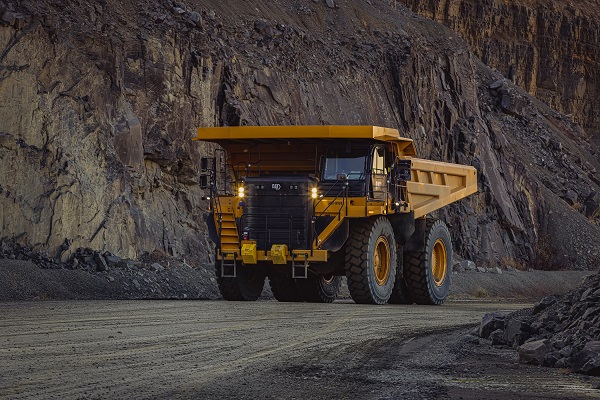
Caterpillar and a few other leading original equipment manufacturers (OEMs), such as Bell Equipment and Volvo Construction Equipment, are acting on this demand and testing several autonomous solutions with new technology-minded, innovation-hungry quarrying customers.
Caterpillar's big December 2022-announced collaboration with Luck Stone, the US's largest family-owned and operated producer of crushed stone, sand and gravel, is seeing the manufacturer's existing Cat MineStar Command for Hauling system used on a fleet of Cat 777G trucks. Karl E. Weiss explains during our morning meeting at Caesars Palace in Las Vegas that the project will allow Caterpillar to gain valuable insights on quarry operations and tailor the next generation of autonomous solutions specific to quarry and aggregate applications.
Due to go live in 2024, the deployment of Caterpillar autonomous solutions at Luck Stone builds on Caterpillar's long history in autonomy and automation. The premium global OEM is recognised as the industry leader with the world's largest fleet of autonomous haul trucks, now numbering more than 580. As of December 2022, the trucks had travelled more than 202 million kilometres and autonomously moved more than 5.5 billion tonnes without a single injury.

"It is a big deal; a very important development for us and the [quarrying] industry," stresses Weiss about the Caterpillar-Luck Stone project. "We've been quite successful in the mining industry with autonomous hauling. People often think the difficult part is the technology, but that's not the difficult part. The difficult part is understanding the customer's operation, ensuring that the customer understands the processes and technology they will be working with and ensuring that our solution supports their business in a way that suits their business. For a quarry, that will be different from a mine. We, as well as our customers, have to learn that.
"We have had a very close relationship with Luck Stone for many decades. The company has a progressive view of how they want to use technology, and they have always pushed the envelope on that. They also have a very strong culture within their staff, which is important when working with an autonomous solution. It's a great opportunity for us to work together."
Speaking to Aggregates Business on 16 March 2023, Weiss says Caterpillar recently hosted Luck Stone representatives at Caterpillar's Tinaja Hills proving grounds and demonstration area in Tucson, Arizona. "It was the first big step in this project's change management process. We helped them understand how it will work and showed them how our autonomous solutions have worked on mine sites. They gave us feedback on what they thought would and wouldn't work for them. It was a good event."
While Cat MineStar Command for Hauling using Cat 777G trucks will go live at the Bull Run plant in 2024, Weiss emphasises that the project's implementation will begin before "we even move the first truck." He continues: "The learning has already begun, and we are working together on the project's infrastructure. After the trucks start moving, our learning will accelerate in the first three months. Then the feedback loop will instruct us on modifying our current MineStar Command for Hauling system to right-size the solution for a quarry site."
Asked whether Cat MineStar Command for Hauling's success in the mining industry can be largely replicated in quarrying environments, Weiss responds: "We operate this system with some very large truck fleets at mine sites whose operators just want as much production as they can get. In many quarries, it's not so much about maximising production; it's about optimising the operation for the production they need. We want to learn how capability sets may differ to optimise the cost-benefit for it to work best in a quarry."
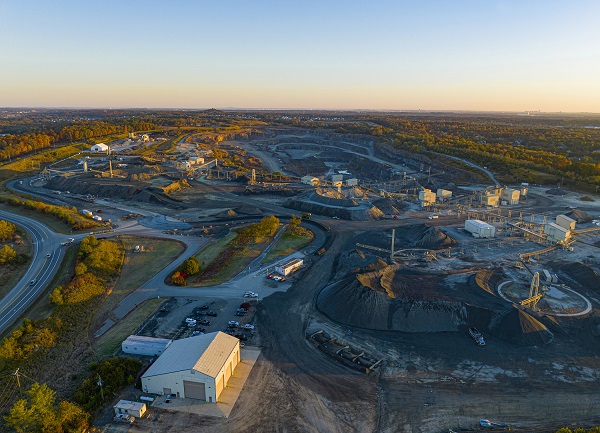
I ask Weiss whether he could give an idea of the potential productivity and efficiency gains quarrying customers could expect from autonomous hauler utilisation compared to traditional in-cab driver operation. "A good way to look at it is turning the quarry into a consistent process, almost like we try to do in our factories. You fully understand how you want your quarry to operate, and you set it to run that way all of the time. It is about continuous improvement: taking cost and time out. A simple example of the latter is doing away with lunch breaks, as an autonomous hauler won't need them! You also gain new options about where to best locate personnel; at their current work site or assisting with work at another site."
Is Caterpillar already looking at wider quarry customer trials of its Cat MineStar Command for Hauling system? "Luck Stone and Caterpillar would not have entered this agreement without knowing that this project will help the quarry industry. We want to take what we learn with Luck Stone and rapidly replicate it with other customers. We are in discussions with other quarry companies that aren't just in North America. We have some very interested customers."
Asked how long it will take quarry customers to see a return on investment in a Caterpillar autonomous solution, Weiss replies: "That is exactly what we want to learn through our collaboration with Luck Stone. I don't know the answer yet, but it will vary. Some of our mining customers have publicly stated a 30% productivity improvement. It gives us an idea of what's possible."

Does Weiss think that Caterpillar autonomous solutions can truly be adopted by quarries globally, given that many sites, including many in large emerging markets, have poor digital connectivity? "Most of our mining customers using our Cat MineStar Command for Hauling system are based in remote locations. That is what drove them to look at autonomous solutions. We have learned a lot about how to make these solutions successful. We work very closely with our customers as there are different network providers in different parts of the world, so there are different ways to supply connectivity. I am confident we can work our autonomous solutions in urban and remote locations."
"We started automation in parts of the mining world with the highest labour costs. Since then, we are automating sites in Latin America, for example, that don't have quite as high labour costs. This shows that autonomous solutions have other advantages rather than just saving money on human labour."
So, what's Weiss's response to those who see autonomous solutions like Cat MineStar Command for Hauling as putting people out of work? "We often get that question put to us when we begin a project with a customer. It's part of the change management that we go through with them. Luck Stone, for example, has a very strong people culture, and they have done a really good job working with us to help their staff understand that it's not about removing jobs; it can be moving jobs from sitting in a truck to an office location and upskilling workers. It is also important to highlight how autonomous solutions can solve some labour shortage issues. In some locations, attracting some people to work as equipment operators has become increasingly difficult."
Commenting on autonomous solutions' sustainability benefits, Weiss says: "When I think of sustainability, I think of people and safety, an ESG [Environmental, Social & Governance] approach that is a key part of autonomous solutions. Using these solutions to run an operation more efficiently can increase sustainability by using less energy, electricity and diesel fuel. Doing this over time will help you meet your sustainability goals. For example, you waste fuel when you have idling time on a truck or other equipment, so we provide tools that enable a customer to reduce unproductive usage. Equipment acceleration through a quarry site can also increase fuel usage. What if you don't need to repeatedly accelerate when a truck, for example, isn't carrying a load? When using an autonomous solution, you can put the truck in a gear that runs it more efficiently."

In November 2022, Caterpillar announced the expansion of its Cat Command for Excavating solution to quarry application-suited Cat 349, 352, 374 and 395, large hydraulic excavators. The remote-control system removes operators from potentially hazardous work site conditions by keeping them at a safe distance. It also reduces potential safety risks from climbing on and off machines.
The Cat Command station allows for non-line-of-sight remote control. Users can comfortably control all basic machine functions like digging, lifting and tracking from a 'virtual cab' with familiar controls and machine displays. Caterpillar exclusive machine technologies like Cat Grade with 3D for Excavators, Grade with Assist for boom and bucket, Swing Assist, E-Fence, and others can also be set, activated, and used remotely.
The Cat Command station allows production to restart immediately following disruptive processes such as blasting in quarry applications. By removing the operator from an on-site cab, the Cat Command station also offers a solution to workforce shortages and training advantages for newer operators. Furthermore, it creates new opportunities for those with physical limitations that prevent them from climbing into the equipment. The new large hydraulic excavator models join the current Cat Command-ready excavators (320-340) and medium dozers (D5-D7), which can be operated from the same Cat Command station.
Weiss says the next Caterpillar machine range to be made 'Command-ready' will be quarrying-suited mid-sized wheeled loaders. "The Cat 982, for example, is a key wheeled loader for quarry truck loading. This will be the first big Cat Command impact on the quarry industry." Weiss says Caterpillar is testing Cat Command for mid-sized wheeled loaders at quarry customer sites inside and outside the US, with the solution set to be launched in Europe in the second quarter of 2024.
"The feedback we've had from the quarry customers using the Cat Command station has been very positive," continues Weiss. "You think of young people entering the industry being attracted to Cat Command station rather than sitting in a loader, truck or dozer on site. But the same attraction applies at the other end of the experience scale. I spoke to a very experienced equipment operator pre-COVID. He was past retirement age and felt ready to retire, but putting him in a Cat Command station has extended his career. It's a lot easier on his body. The customer needs that operator as they can't find enough of them. We find the learning curve with Cat Command station is very quick."
Which quarrying regions does Weiss think the Cat Command station will most appeal to? "I think North America and Europe will be the leaders in this. I think Australia will also be quick to take it up."
Weiss explains the different levels of the Cat Command station: "The simplest form is an over-the-shoulder control, used where you see the vehicle. This is for customers with applications where they periodically have a slightly riskier environment, perhaps with difficult underfoot or high wall conditions. The next step is our universal remote operating system, where you can control a machine from many miles away as it connects through telematics. The most advanced Cat Command station system is SATS (Semi-Autonomous Tractor System), where you can operate three to five dozers from one virtual cab seat."
Like for Cat MineStar for Hauling, Weiss stresses that quarry customers' return on investment in a Cat Command station system for their operation will vary depending on their site configuration and equipment fleet usage. "At some sites, there may not be an initial ROI; it is more of a safety and recruitment play. You can say, 'You don't have to work at this site in the middle of nowhere. You can work a machine from the city you live in.
"If you look over a full working day, you see many equipment operators' performance degrades over time as they tire. The Cat Command station gives operators a fresher, more sustainable working environment."
I ask Weiss what features Caterpillar wants to add to its Cat Command station offering. "What we've done with the large dozers in terms of a repeatable process we can automate and allow one operator to operate several dozers is a goal with other equipment and applications. Safety features will be built around this growth in capability."
A native of Hagerstown, Indiana, Weiss graduated from Purdue University in 1992 with a Bachelor of Science (BSc) in agricultural engineering. He received an MBA from Northern Illinois University in 1999.
Since joining Caterpillar in 1988, Weiss has had various assignments within product development at the manufacturer's Decatur, Joliet, and Aurora facilities, primarily focused on large machine structural design. Weiss subsequently transferred to Geneva, Switzerland, with Caterpillar Global Mining as an equipment management consultant serving mining customers and dealers in Europe and Africa. After a stint as Aurora, Illinois' large wheeled loader new product introduction manager, Weiss and his family moved to Beijing, China, for four years. He served as the wheeled loader product manager for the Asia Pacific Region. In that role, he managed the integration of Shandong Engineering Machinery (SEM) as Caterpillar's entry into the Chinese wheeled loader industry. Weiss then served as the worldwide product manager for medium-wheeled loaders in Aurora. In 2013, the Caterpillar Board of Directors named Weiss vice president of the Earthmoving division. He was then named vice president of the Material Handling & Underground division in August 2017. He became senior vice president of the Integrated Components & Solutions division and chief technology officer in May 2019.

"Each of my experiences with Caterpillar in different parts of the world has broadened my perspective, firstly in customer empathy," explains Weiss. "No customer is the same. There are bigger differences between a customer in the US and a customer in China than among customers throughout the US, but still, there's a spectrum of customers everywhere."
Weiss says that understanding customer needs led to Caterpillar's entry into GC products [excavation, earthmoving, load and haul, paving, and work tools for small- to medium-sized customers looking for best-in-class, durable, reliable machines, fuel competitive and offering good value for money] and XE products [a premium offering across multiple machine classes, signifying the next generation of machines designed to improve system efficiencies, operator productivity and assist businesses to achieve greater sustainability outcomes]. "It means we don't have a 'one size fits all' offer any more," he emphasises.
I ask Weiss what he likes best about his senior Caterpillar role, his biggest day-to-day challenges, and how he looks to overcome them. "I've been at Caterpillar 35 years this year, and I'd honestly say this is the most exciting time of my career. So much is possible. We haven't talked about electrification, but that's happening. Automation is happening. Information is just exploding. Our ability to work with our customers across these areas and others opens up many ideas and capabilities; it is not a question of 'What can we do? It is more about 'How do we prioritise?'. Our work with Luck Stone is part of that journey. There are a lot of things we can do to help them at their Bull Run plant. But where do we focus our efforts? It is challenging to set priorities and to make things easy for customers. That's where change management comes in."


